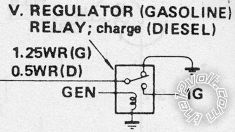Posted: February 10, 2011 at 6:18 PM / IP Logged
Posted: February 10, 2011 at 11:04 PM / IP Logged
Posted: February 11, 2011 at 12:13 AM / IP Logged
Posted: February 11, 2011 at 12:51 AM / IP Logged
Posted: February 11, 2011 at 3:02 PM / IP Logged
Sorry, you can NOT post a reply.
This topic is closed.
 Printable version
Printable version


| You cannot post new topics in this forum You cannot reply to topics in this forum You cannot delete your posts in this forum You cannot edit your posts in this forum You cannot create polls in this forum You cannot vote in polls in this forum |

| Search the12volt.com |
Follow the12volt.com 
Wednesday, May 29, 2024 • Copyright © 1999-2024 the12volt.com, All Rights Reserved • Privacy Policy & Use of Cookies


Wednesday, May 29, 2024 • Copyright © 1999-2024 the12volt.com, All Rights Reserved • Privacy Policy & Use of Cookies
Disclaimer:
*All information on this site ( the12volt.com ) is provided "as is" without any warranty of any kind, either expressed or implied, including but not limited to fitness for a particular use. Any user assumes the entire risk as to the accuracy and use of this information. Please
verify all wire colors and diagrams before applying any information.








 When the generator (alternator) charges, it toggles the charge-Lamp (D+ or L; the LHS WR White-Red wire) from GND to IG +12V.
That connects to #86 of the relay.
As usual I can't find my 12V posts with diagrams, but there are descriptions (search "UIBI").
There are other sites with figs, but I'll have to find them later.
No other suggestions. Unless you do NOT have a charge-lamp circuit (which most typical (older) alternators do have), them IMO the UIBI is the most reliable & best as well as the cheapest.
When the generator (alternator) charges, it toggles the charge-Lamp (D+ or L; the LHS WR White-Red wire) from GND to IG +12V.
That connects to #86 of the relay.
As usual I can't find my 12V posts with diagrams, but there are descriptions (search "UIBI").
There are other sites with figs, but I'll have to find them later.
No other suggestions. Unless you do NOT have a charge-lamp circuit (which most typical (older) alternators do have), them IMO the UIBI is the most reliable & best as well as the cheapest.